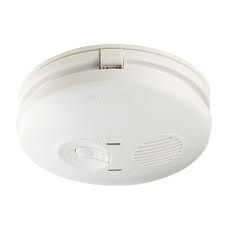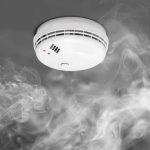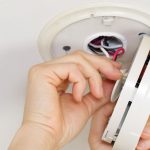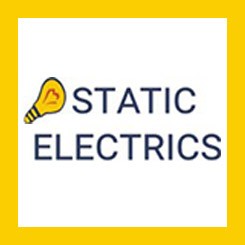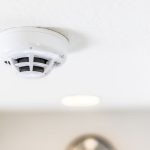Many of us in Brisbane and the Sunshine Coast welcomes the slightly cooler days of autumn but unfortunately, this time of year also sees an increase in electrical fires, as people switch on their fires and heaters to keep the chill at bay in the evenings.
When it comes to residential fires, the statistics make a pretty grim reading, with approximately 2500 people killed each year and another 500 people losing their lives to the effects of carbon monoxide. Sadly, many of these deaths could have been avoided with the installation of smoke alarms and carbon monoxide alarms throughout the property.
So let’s take a look at the different types of smoke alarms which you could use in your home to help protect yourself and your family.
Ionising smoke alarms
These types of alarm will detect the presence of flames from cooking fires or from burning paper but they’re not so adept at detecting a smouldering fire from say, a burning mattress or couch. Unfortunately, because these alarms often nuisance trip, if you burn the toast for example or add oil to a hot pan, many people disable them.
Photoelectric alarms
These particular smoke alarms respond faster to an early fire which is still in the smouldering stage because of the fact that they’re more alert to the combustion particles which emanate from slow smouldering fires, which often occur when people are asleep in their beds at night.
Dual Sensor alarms
These include both photoelectric and ionisation sensors which should give homeowners adequate warning of a smouldering fire or one with active flames, providing you with superior protection.
Carbon Monoxide alarms
This highly toxic gas is silent and odourless and can render a person unconscious in an instant. The greatest cause of death through carbon monoxide is faulty gas heaters.
Vibrating and strobe alarms
If you’re hard of hearing then you may struggle to hear alarms, especially if you’re on your own at home. However, there are specialist alarms that can be placed beneath your pillow and which contain a vibrating pad and strobe light which are activated if your smoke alarm sounds.
Safety in numbers
To provide even greater protection it’s advisable to have all of your fire alarms linked and this means that they’ll all emit simultaneous sounds when triggered, giving you an earlier warning of danger and a longer response time.
If your house isn’t equipped with smoke and fire alarms and carbon monoxide alarms then in the event of a fire or carbon monoxide leakage, your family could be in severe danger. Why take the risk when for a relatively small outlay you can have alarms installed to give yourself and your family peace of mind.
If you need advice or help with the installation of smoke alarms in your home, then give us a call and we’ll send round one of our electricians. Call us today on07 3497 5076.

